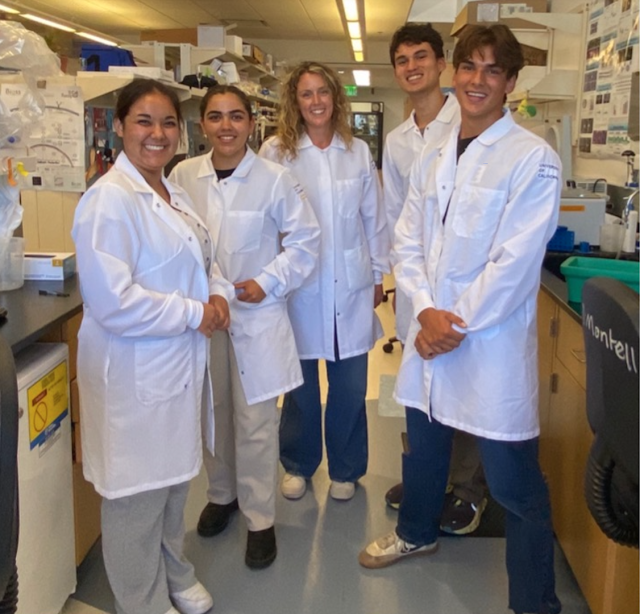Advisor
Dr. Denise J. Montell - Molecular, Cellular, and Developmental Biology
Mentor
Hadley Hanson - Biomolecular Science & Engineering
Investigating the Role of cSRC Mutations in Bone Density Homeostasis
Interns
Emily Kugelmann - Biology
Diego L. Salvador - Chemical Engineering
Joseph Salceda - Chemical Engineering
Isabel Rodriguez - Biopsychology

Project Description
Bone is constantly being remodeled by specialized cells: osteoblasts, which build bone, and osteoclasts, which break it down. When this delicate process is imbalanced, bone structure is impaired. Patients with a mutation in the cSRC gene exhibit severe bone defects. This specific mutation causes cSRC proteins to be constantly active. While there is a correlation between cSRC mutations and severe bone defects, the exact pathway describing how these mutations cause bone defects has not been outlined. We hypothesized that the mutation of the cSRC gene causes osteoclasts to break down bone excessively, resulting in the presentation of bone defects. To investigate this phenomenon, osteoclasts with and without the hyperactive cSRC mutations were grown on plates coated with calcium phosphate, a compound that mimics human bone. Over seven days, osteoclasts broke down the calcium phosphate, leaving behind holes. By staining (with blue dye) the remaining calcium phosphate, we compared the extent of bone breakdown. Our experiment indicates that cells containing cSRC mutation resorbed significantly more calcium phosphate. These novel findings provide concrete evidence that the mutation increases osteoclast activity and may explain the lower bone density observed in patients. This study provides a link between bone defects and hyperactive cSRC mutations in osteoclasts. Possible next steps include testing inhibitors of cSRC to develop more effective treatments for excessive osteoclast resorption. Furthering this research can improve the lives of millions who suffer from bone defects.
